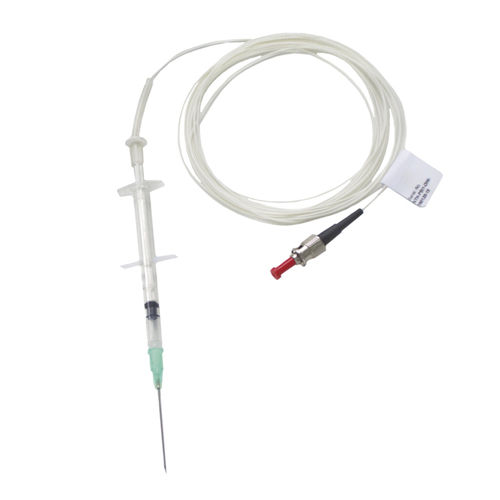
- Laboratory
- Physico-chemical analysis
- Oxygen sensor
- PreSens Precision Sensing GmbH
Flow sensor NTH-PSt1oxygenlaboratoryminiature

Add to favorites
Compare this product
Characteristics
- Evaluation type
- flow, oxygen
- Applications
- laboratory
- Other characteristics
- miniature
Description
This sensor is a miniaturized optical oxygen sensor designed for all research and packaging applications where a small tip size (< 50 µm tapered sensor tip TS, < 140 μm flat-broken sensor tip TF) and fast response time (t90 < 3 s) are necessary. It is mounted inside a stainless steel needle, which protects the optical fiber and oxygen-sensitive sensor tip. This design is optimal for easy penetration of tissue, septum rubber or packaging materials. After penetration the sensor tip is extended for measurements.
High spatial resolution (down to < 50 μm)
High temporal resolution (t90 < 3 sec.)
No consumption of oxygen
Signal independent of flow velocity
Measures in liquids as well as in gas phase
APPLICATIONS
Packaging & Quality Control
Oxygen inside packaging can lead to oxidative deterioration of certain products. Therefore, determination of the oxygen content within packages or pharmaceutical vials is of essential importance to ensure both the filling quality and the long-term storage stability. With our micro-invasive needle-type oxygen microsensors we offer a simple tool to determine residual oxygen both in the headspace and in liquids. The septum of the vial or package is pierced with the needle and the sensor is extended for measurement. As the measurement is made inside the package no error-prone and time consuming sampling is necessary. These oxygen microsensors are ideal tools for quality control in the food & beverage, packaging, and pharmaceutical industries.
VIDEO
Catalogs
Industry & Technical
16 Pages
Optical Oxygen Sensors & Meters
52 Pages
Other PreSens Precision Sensing GmbH products
O2 SENSORS
Related Searches
- Medical probe
- Control software
- Temperature probe
- Laboratory software
- Windows software
- Laboratory analyzer
- Monitoring probe
- Data management software
- Measurement software
- Control analyzer
- Gas probe
- Oxygen analyzer
- Flow probe
- Laboratory probe
- Oxygen probe
- Pressure analyzer
- Calibration probe
- PH meter
- CO2 analyzer
- Laboratory pH meter
*Prices are pre-tax. They exclude delivery charges and customs duties and do not include additional charges for installation or activation options. Prices are indicative only and may vary by country, with changes to the cost of raw materials and exchange rates.















